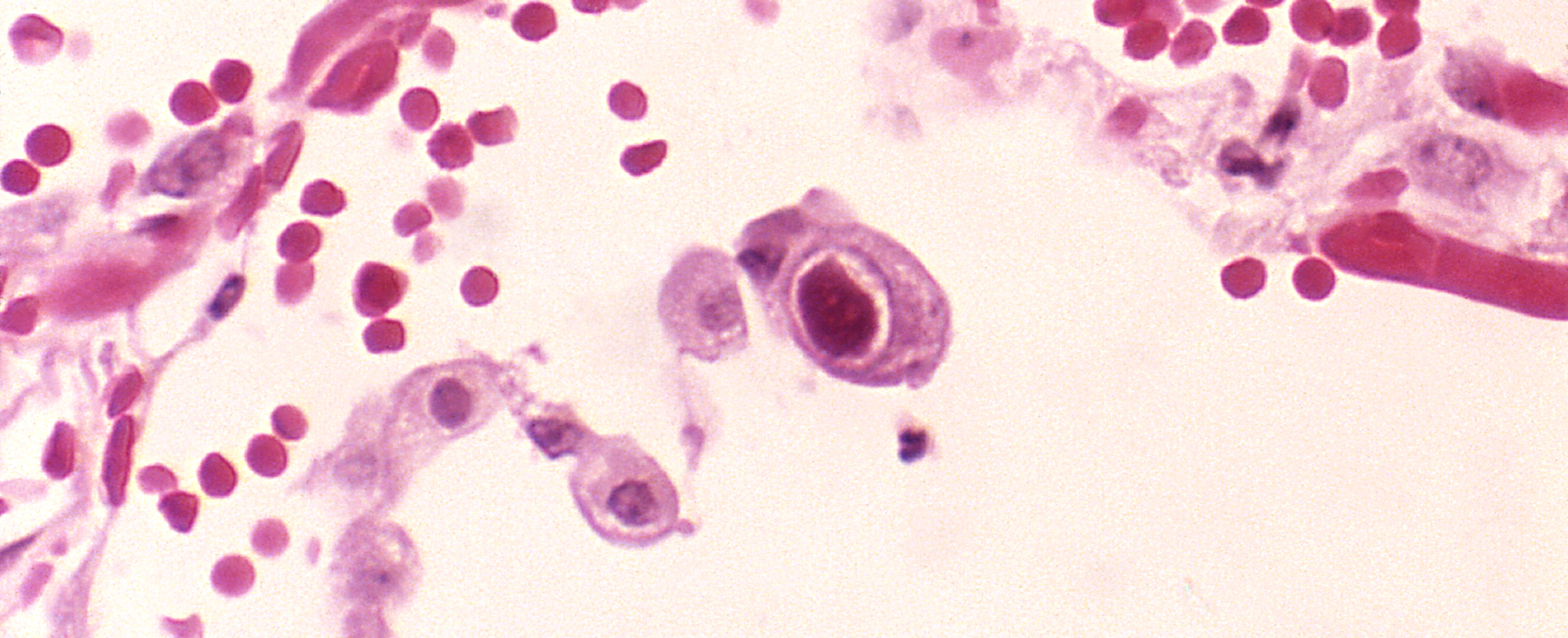Even though a virus is currently sweeping the globe, we know that our immune system naturally protects us against most of these disease-causing intruders. Defence cells constantly patrol our tissues, looking for pathogens. Body cells that have been invaded by a virus identify themselves by presenting fragments of the virus, called antigens, on their surface. The killer T cells of the immune system prevent the virus from multiplying by forcing the affected cell to self-destruct. They instruct the infected cells to commit suicide by a range of mechanisms that share a central switch. Virologists working with Prof Luka Cicin-Sain at the HZI have now discovered that viruses can block this important switch and thus prevent the self-destruction of the cell. “Our findings bring about a paradigm shift in the research into viruses and their interaction with the immune system,” says Cicin-Sain, who leads the study.
The fact that viruses have strategies to circumvent attacks by the immune system is not new; the various mechanisms they use to do this are known collectively as immune evasion. The cytomegalovirus (CMV), which Luka Cicin-Sain studies, is a master of immune evasion. CMV infection often goes completely unnoticed or only causes mild, cold-like symptoms. However, if the immune system is immature or dysfunctional, the infection can be severe or even deadly. A CMV infection during pregnancy can cause severe and lasting damage to newborns. Organ or stem cell transplants can lead to serious complications and death. It has been known for decades that CMV suppresses the presentation of viral antigens on the surface of infected cells. “This has been the narrative of immune evasion until now,” says Cicin-Sain: “Immune evasion makes the virus invisible to T cells.”
Previously, we knew that CMV hides from the immune system. But now we have been able to show that the virus actively fights back.
In his laboratory, however, he made an interesting observation: When he switched off the mechanisms that suppress antigen presentation, the viruses were less able to fend off the attack by the killer T cells, but the effects were mild. Instead, viruses that lacked a protein called UL36 were left completely defenceless and could not prevent the killing of infected cells. UL36 was already known to interact with an important switch in programmed cell death, but what this meant in detail for the interaction of the virus with the immune system was unclear.
“My staff have spent several years clarifying the mechanism in detail on a molecular level, which involved extensive experiments,” says Cicin-Sain. “And we were able to show that blocking the central death switch occurs in the animal model used for research as well as during infection of human cells.”
Cicin-Sain summarises the key finding from the work: “Previously, we knew that CMV hides from the immune system. But now we have been able to show that the virus actively fights back.” CMV is not the only virus that can influence the cells’ self-destruction programme. Cicin-Sain, who has been working on the topic of immune evasion for twenty years, is therefore certain that the same survival mechanism that has now been described, or something similar, will also be found in other viruses. In addition, his discovery has already benefited organ transplant recipients: Killer T cells are used as therapy to protect transplant recipients against CMV disease. Viruses without the UL36 self-destruction brake are now in use to rapidly identify the appropriate antiviral T cells.
Luka Cicin-Sain heads the “Immune Aging and Chronic Infections” research group and is also currently contributing to research on the novel coronavirus SARS-CoV-2 in the modern biosafety level 3 laboratory at the HZI.
Original publication:
M. Zeeshan Chaudhry, Rosaely Casalegno-Garduno, Katarzyna M. Sitnik, Bahram Kasmapour, Ann-Kathrin Pulm, Ilija Brizic, Britta Eiz-Vesper, Andreas Moosmann, Stipan Jonjic, Edward S. Mocarski, and Luka Cicin-Sain: Cytomegalovirus inhibition of extrinsic apoptosis determines fitness and resistance to cytotoxic CD8 T cells. PNAS 2020;
doi: 10.1073/pnas.1914667117
Author: Ulrike Schneeweiß

